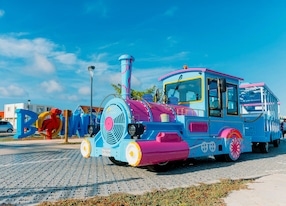Bonaire, a small island nestled in the southern Caribbean, is known as a diver's paradise with its crystal-clear waters, vibrant coral reefs and a commitment to conservation. But there's more to Bonaire than just underwater adventures; the island also offers stunning landscapes, rich wildlife and a peaceful, welcoming atmosphere. Deciding on the best time to visit Bonaire can significantly enhance your experience, whether you're diving, windsurfing or simply soaking up the local culture. Here's a comprehensive guide to help you plan your trip.
High Season: Mid-December to April

Best for: Ideal Weather & Water Sports
The high season in Bonaire runs from mid-December to April. During these months, the weather is at its best, characterized by warm, sunny days and very little rain, making it the perfect time for outdoor activities.
Key Events & Activities:
- Diving & Snorkeling: Take advantage of the calm, clear waters to explore Bonaire’s famous coral reefs. The island’s marine park offers over 80 dive sites accessible from shore.
- Windsurfing & Kitesurfing: Visit Lac Bay, a world-renowned spot for windsurfing, or the kiteboarding beaches on the island’s west coast where steady trade winds provide ideal conditions.
- Cultural Events: Participate in local festivities, such as the Bonaire Regatta in January, featuring sailing races, music and food as you celebrate the island’s nautical heritage.
Shoulder Season: May to August

Best for: Fewer Crowds & Good Deals
The shoulder season of May to August is a great time to visit Bonaire if you prefer to avoid the peak tourist crowds. The weather remains warm and the waters still, though there is a slight increase in rainfall starting in late July.
Key Events & Activities:
- Nature Watching: This is an excellent time for bird watching, as many species migrate through Bonaire. The island's salt pans attract flamingos, herons and other birdlife.
- Bonaire Dive Week (May): Delight in a week-long celebration of Bonaire’s diving community with workshops, environmental talks and, of course, plenty of diving.
- Food & Culture: Enjoy the Taste of Bonaire events throughout these months, where you can sample local and international dishes and experience the cultural diversity of the island.
Low Season: September to November

Best for: Adventurous Travelers & Nature Lovers
The low season, from September to November, coincides with the Caribbean hurricane season, although Bonaire is generally outside the hurricane belt. This period sees fewer tourists and lower prices, along with an increase in rainfall, particularly in October and November.
Key Events & Activities:
- Eco Tours: The rainy season rejuvenates the island’s ecosystems, making this a fantastic time for eco-tours. The Washington Slagbaai National Park is particularly lush and beautiful.
- Off-Peak Diving: With fewer divers around, you have more of the reef to yourself. Visibility remains good and the sea life is abundant.
- Cultural Insights: Engage more deeply with the local community and learn about Bonaire’s history and traditions during this quieter time.
When is the Best Time to Visit Bonaire?
The best time to visit Bonaire is during the high season from mid-December to April. This period offers the most reliable weather for enjoying a wide range of outdoor activities, especially water sports like diving and windsurfing, which are big draws for the island. Additionally, this season avoids the rainier months and aligns with several key local events, enhancing your travel experience with vibrant cultural expressions and community festivities. Visiting Bonaire during these months ensures you'll experience the island at its best, both above and below the water.















